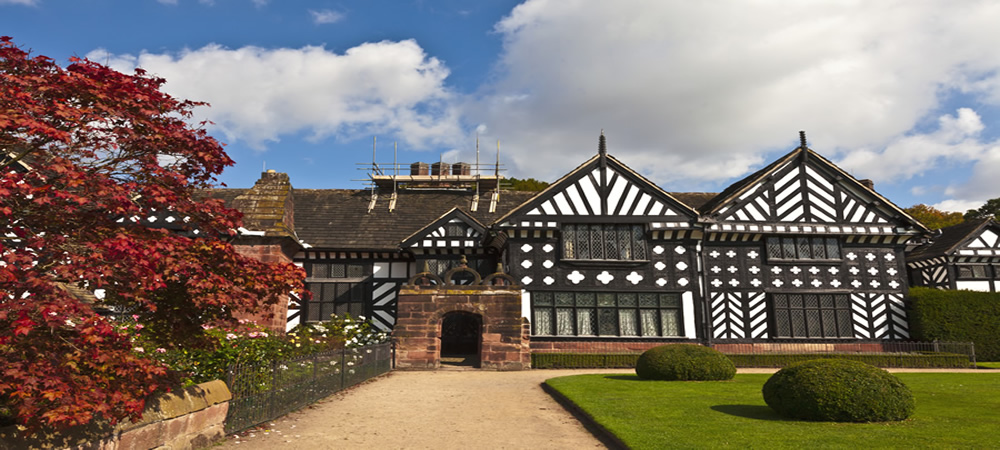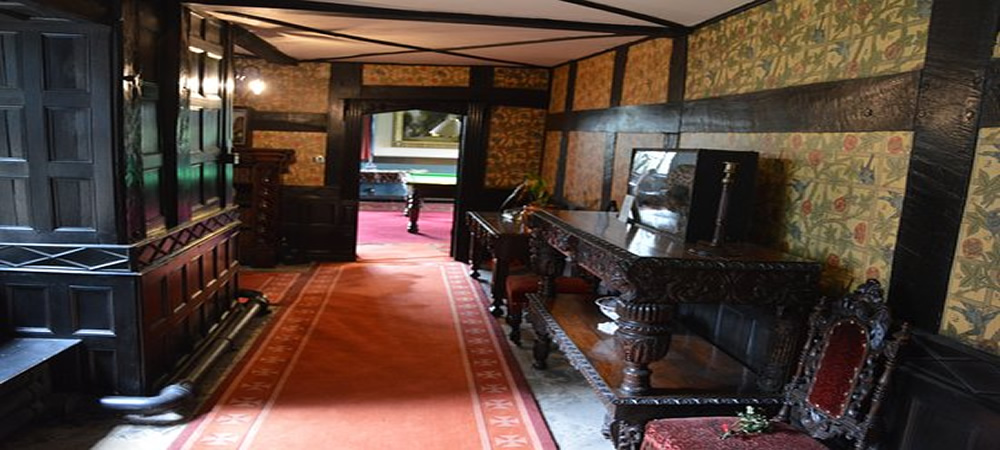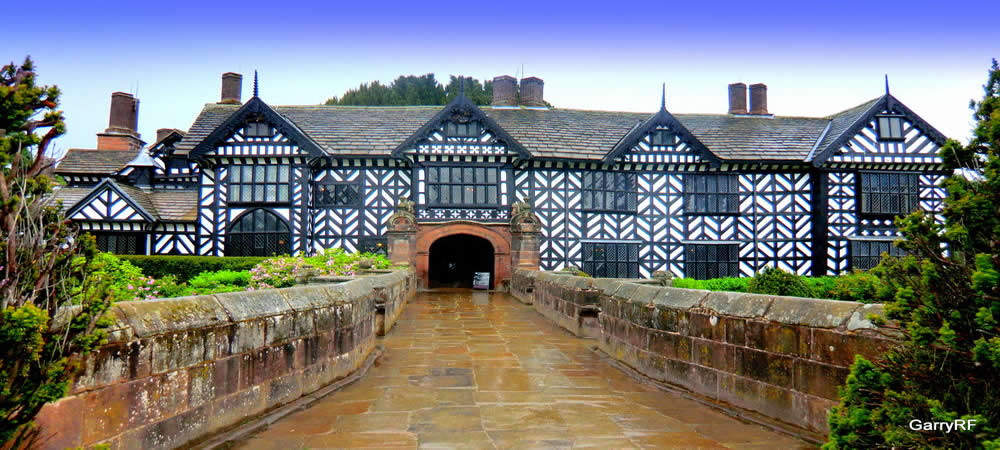"A Wood-framed Wattle-and-Daub Tudor Manor House - one of the finest surviving examples of its kind"



Speke Hall is a wood-framed wattle-and-daub Tudor manor house in Speke, Liverpool, England. It is one of the finest surviving examples of its kind. It is owned by the National Trust and is a Grade I listed building.
Speke Hall, originally built in 1530 for Sir William Norris, has an atmospheric interior that spans many periods. The Great Hall and priest hole date from Tudor times, while the Oak Parlour and smaller rooms, some with William Morris wallpapers, illustrates the Victorian desire for privacy and comfort.
During the turmoil of the Reformation the Norrises were Roman Catholics so the house incorporated a priest hole and a special observation hole built into a chimney in a bedroom to allow the occupant to see the approach to the house to warn the priest that people were coming. There is also an eavesdrop (a small open hole under the eaves of the house) which allowed a servant to listen in on the conversations of people awaiting admission at the original front door.
Priest holes were specially disguised within a house to baffle search parties and this one at Speke Hall is there so priests could hide safely away during a time when Catholics were persecuted, often imprisoned, tortured and even killed during the reign of Queen Elizabeth I.
Speke Hall is an outstanding example of a timber-framed courtyard house of the 16th century. Built for the Norris family, it was acquired in 1795 by Richard Watt, a wealthy ship-owner whose descendant Richard Watt V restored and totally refurnished the house in the 1860s in an antiquarian spirit throughout. His collection of over 200 pieces of ‘ancient’ carved oak furniture is one of the finest to survive in a domestic setting, and he further enhanced the romantic Tudor interiors with fascinating collections of stained glass, arms and armour, tapestries, paintings and ceramics.
There is also fine Jacobean plasterwork and intricately carved furniture. A fully equipped Victorian kitchen and servants' hall enable visitors to see 'behind the scenes'. The restored garden has spring bulbs, a rose garden, summer border and stream garden, and there are woodland walks and magnificent views of the Mersey basin and North Wales hills from The Bund, a high bank.
Home Farm, a 5-minute walk from Speke Hall, is a model Victorian farm building, restored and part-adapted to provide a restaurant, shop and visitor facilities, and offers estate walks, children's play area and orchard.
This is a self-guided tour as guiding is not allowed inside the building but there are curators who can answer questions and provide information to the individual.
Step back in time and see how the Elizibethans lived their lives. The Hall then evolved into the Victorian Age.
These were life-savers for Catholic priests - find out why and see the few remaining examples in the world.
There are rare and antique examples of furniture from different ages on display throughout the Hall.
An added bonus - see how a Victorian farm worked and explore the kitchen garden which would supply the household.
There are indoor and outdoor parts to this visit. During poor weather it is possible to spend all the time indoors but there is a walk from the carpark to the hall which is not sheltered. This tour is accessible to wheelchair users but care must be taken and some parts of the hall are not accessible.

We can arrange pick-up from any point in Liverpool City Centre.

Journey to Speke Hall using taxi or mini-bus depending on number of people taking part in the tour.

Arrival at Speke Hall where you are free to explore the Hall and the grounds at your leisure.

Meet your driver who will take you on the return journey to Liverpool City Centre to the original pick-up point.
Feedback for individual guides is obtained from a variety of sources, including social media. We'd be delighted if you could take the time and let us know how you enjoyed your tour.
Trains on the National Rail Network arrive at Liverpool Lime Street Station. There is also a local train network called Merseyrail that travels to / from Central Station. You would then be able to obtain detailed directions using the search facility above.
There are two main bus terminals in Liverpool. There is the Central Bus Station at Canning Place, Liverpool 1. There is also another terminus at Queens Square by St George's Hall. There is an extensive bus network throughout Liverpool and the 82 bus from the Central Bus Station will travel through the city centre.
Black cabs are available all over the city and can be flagged at the roadside. You can tell the taxi driver the name of your destination and they will be able to take you there. Their knowledge of streets and venues (especially in the city centre) is extensive and you should not have any difficulty.